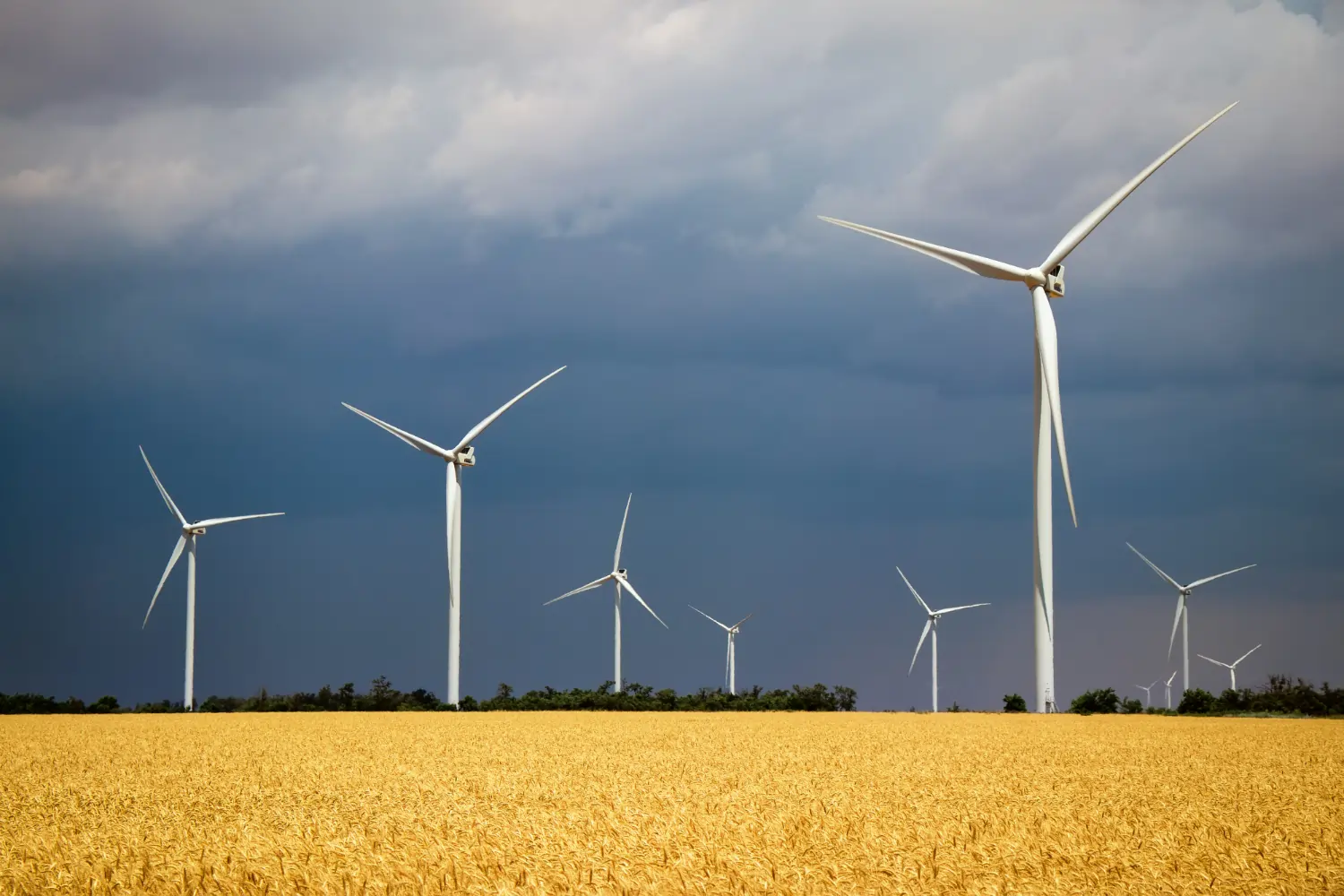⫸ Introduction to Wind Energy
Wind energy is a powerful force of nature with immense potential to reshape our energy landscape. Here’s a primer on this increasingly important renewable resource:
What is Wind Energy?
In simple terms, wind energy harnesses the kinetic energy of moving air (wind) and converts it into usable electricity. This is primarily achieved using wind turbines, which transform the wind’s power into mechanical rotation and later into electricity.
A Brief History of Harnessing the Wind
Humans have used wind power for centuries. From ancient sailboats to traditional windmills for grinding grain, the wind has been a vital energy source. Modern wind energy technology began to emerge in the late 19th century, and today, it’s one of the fastest-growing energy sectors.
Why Wind Energy Matters?
Wind energy offers a clean, sustainable alternative to fossil fuels. It helps reduce greenhouse gas emissions, combat climate change, and diversify energy sources. Technological advancements are becoming increasingly cost-effective, making it a critical solution for a greener future.
⫸ Wind Farms and their Geographic Impact
Wind farms are crucial to harnessing energy from wind on a large scale, but their development significantly impacts the surrounding geography. Let’s explore the key considerations of onshore and offshore wind farms and their visual influence on landscapes.
Onshore Wind Farms
● Land-use Considerations
Onshore wind farms require substantial land areas, potentially competing with agricultural, residential, or conservation uses. Careful site selection is essential to minimize conflicts. Factors like wind availability, land accessibility, and proximity to power grids all play a role in the suitability of a location.

Offshore Wind Farms
● Marine Environment Considerations
Offshore wind farms in oceans or large lakes offer strong and consistent wind resources. However, their construction and operation can disrupt marine ecosystems. Potential impacts include seabed disturbance, disruptions to fish populations, marine mammal behavior, noise pollution affecting marine life, and bird collision risks.
Additionally, shipping routes and fishing grounds may be affected, requiring thorough planning and stakeholder engagement. Mitigation strategies, such as careful route planning for underwater cables, are important for minimizing environmental harm.
The Visual Impact of Wind Farms
Wind turbines are prominent structures that alter the landscape. Public perception of their aesthetics can be mixed. Some view them as symbols of clean energy progress, while others find them visually intrusive. Planning guidelines and thoughtful design can help integrate wind farms into the landscape more harmoniously.
⫸ How Wind Energy Works
Wind-generated energy offers a powerful solution to our energy needs, but how exactly does it work? Harnessing the power of the wind is a remarkably simple idea with sophisticated execution. The process begins with the sun. Uneven heating of the Earth’s surface creates winds, which possess kinetic energy. Wind turbines are designed to capture and transform this kinetic energy into usable electricity.
Wind turbines act like the opposite of a fan. Instead of using electricity to create wind, they use wind to make electricity. As wind flows over the aerodynamic blades, it causes them to rotate, which then spins a generator and produces electricity.
Types of Wind Turbines
The two main types of wind turbines are:
- Horizontal-Axis Wind Turbines (HAWTs): The classic design with a propeller-like rotor, these are most common in large-scale applications.
- Vertical-Axis Wind Turbines (VAWTs): Feature a vertical shaft and blades. They are more suitable in areas with variable wind directions.
Key Components of a Wind Turbine
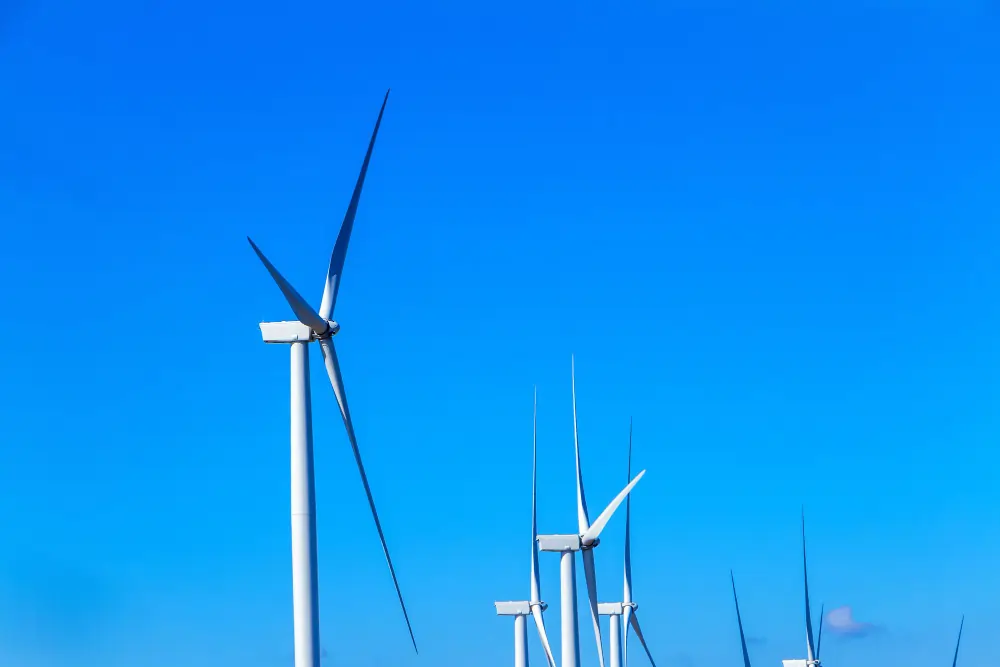
Wind turbines comprise several crucial parts: blades, a rotor, a nacelle (housing the generator), a tower, and internal controls.
Other specialized designs
Innovative designs are constantly emerging, like bladeless wind turbines, airborne wind turbines, and even small-scale turbines for homes and businesses.
⫸ Pros and Cons of Wind Energy
Wind energy, a rapidly expanding power source, offers significant advantages but has certain drawbacks. Understanding this multifaceted energy source is crucial for making informed choices about our energy future.
What are the Advantages of Wind Energy?
● Renewable and Clean Energy Source
Unlike fossil fuels, wind energy doesn’t produce greenhouse gases or pollutants. It’s a genuinely renewable resource powered by the natural movement of air. This energy is key in fighting climate change and ensuring a cleaner future.
● Cost-Effectiveness Over Time
While upfront costs can be higher, this energy becomes increasingly cost-competitive over its lifetime. Zero fuel costs and decreasing maintenance expenses make it a long-term economical choice compared to traditional energy sources.
● Job Creation and Economic Benefits
This energy sector boosts local economies. Wind farms generate jobs and stimulate economic growth from manufacturing and installation to ongoing maintenance.
● Land-use Compatibility
Wind turbines have a small footprint, allowing farmers and ranchers to continue using land for agriculture or grazing. This makes it an ideal partner for existing land-use practices.
What are the Disadvantages of Wind Energy?
● Variability and Intermittency
Wind is a natural variable resource, meaning output fluctuates. This requires careful planning and integration with storage solutions or other energy sources for grid reliability.
● Potential Impacts on Wildlife and Habitats
While less impactful than many energy sources, wind farms can pose a risk to birds and bats. Careful siting and mitigation strategies minimize this impact.
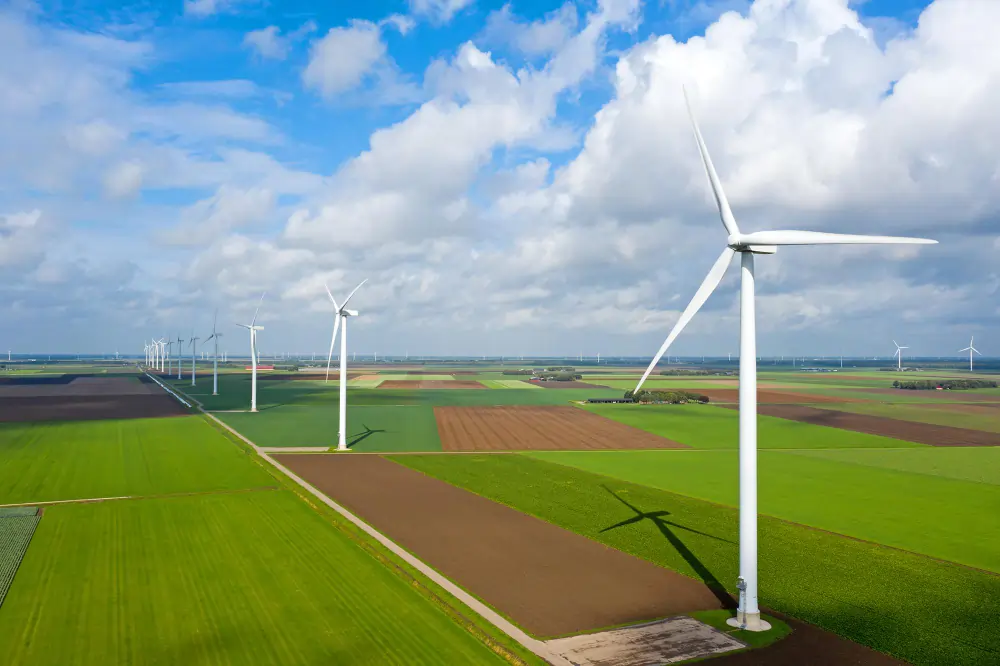
● Visual and Noise Considerations
Wind turbines could be more appealing, and noise can concern communities close to installations.
● Dependence on Suitable Wind Resources
Wind energy is most efficient in areas with consistently strong winds. Identifying these suitable locations is key.
⫸ Wind Energy Around the World
Wind energy is a rapidly expanding force in the global energy landscape. Here’s a look at its reach, leaders, and exciting developments shaping the future of this powerful renewable resource.
Global Leaders in Wind Power
China boasts the largest installed wind power capacity in the world. The United States follows closely, with significant Great Plains and Midwest wind farms. Germany, a pioneer in generating energy from wind, remains a major player. Other nations like India and Spain are rapidly increasing their wind power capabilities.
Denmark and Wind Energy
Denmark stands out as a true wind energy champion. It obtains an impressive percentage of its electricity from wind power and aims to reach 100% renewable energy by 2050. Denmark’s success showcases the potential of wind energy when paired with ambitious policy and technological innovation.
Offshore Wind Energy Development
Offshore wind energy holds tremendous potential due to stronger, more consistent winds at sea. Countries like the UK and China are at the forefront of offshore wind farm development. This expansion solves land constraints and opens new avenues for large-scale wind energy generation.
The Future of Wind Energy
The future of this energy looks bright. Costs continue to decline, making it increasingly competitive with traditional energy sources. Governments globally are setting ambitious renewable energy targets, driving further investment in wind power.

● Innovations in Wind Turbine Technology
Innovations in wind turbine technology are pushing boundaries. Larger, more efficient turbines are being developed, capable of generating even more power. Research into floating offshore wind turbines could unlock wind resources in deeper waters. Advancements in energy storage will help integrate wind power more seamlessly into the grid.
⫸ Wind Energy in Your Community
Is wind energy a viable option where you live? The answer might surprise you! While large-scale wind farms capture the most attention, this energy solutions are becoming accessible on a smaller scale. Let’s explore how wind power could benefit your home, business, and community.
Small-Scale Wind Energy for Homes
A residential wind turbine might be worthwhile if you have sufficient land and consistent wind patterns. These turbines can reduce your reliance on the power grid, lower energy bills, and even sell excess energy back in some locations. Be sure to research local regulations and consult with wind energy professionals.
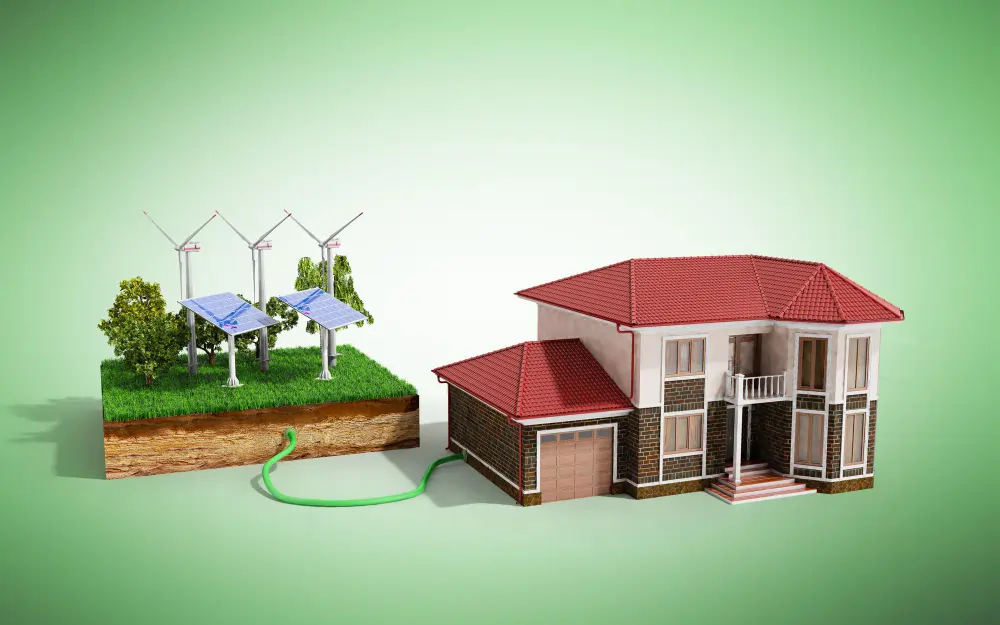
Small-Scale Wind Energy for Businesses
Businesses can also embrace this type of energy to cut costs and boost their sustainability image. Small wind turbines can power everything from farms and remote offices to retail stores. Incentives and tax credits might be available, making the financial case for this green energy even stronger for commercial applications.
Finding Wind Energy Projects Near You
Want to see wind-generated energy in action? There might be a wind farm or a business with wind turbines near you. Search for local wind projects online, or contact renewable energy organizations active in your area. Visiting a wind energy site can be an eye-opening experience!
⫸ Taking Action: Supporting Wind Energy
Want to go beyond understanding wind energy and make a real difference? Here are concrete steps you can take to champion this clean power source and contribute to a more sustainable future:
Advocating for Wind-Friendly Policies
- Contact your local and national representatives to voice your support for wind energy development and policies that encourage renewable energy use.
- Join or support organizations advocating for clean energy initiatives.
Reducing Your Carbon Footprint
- Choose an energy provider that offers renewable energy options, including wind energy.
- Minimize energy consumption by using energy-efficient appliances, turning off lights, and unplugging unused devices.
Investing in Renewable Energy
- If you own a home, consider installing rooftop solar panels and a small wind turbine (where local regulations allow).
- Research investment funds focused on renewable energy companies and technologies, including wind energy developers.
Remember, individual choices combined with collective action can drive the growth of wind energy and help shape a cleaner energy future.
⫸ Fun Facts about Wind Energy
Did you know this clean energy has a fascinating history and even more exciting potential? Let’s dive into some surprising facts about this powerful renewable resource:
- Ancient Power: Windmills have been used for centuries, with the earliest examples in Persia as far back as the 7th century.
- Sky-High Turbines: Some offshore wind turbines are taller than skyscrapers. Modern wind turbines can be taller than the Statue of Liberty!
- Bird-Friendly Solutions: New turbine designs and careful placement are minimizing risks to bird populations.
- Enough for Everyone: This could power the entire world multiple times.
- Growing Global Force: It is one of the fastest-growing energy sources worldwide.
⫸ Solar Energy vs Wind Energy: Choosing the Right Renewable
Choosing between solar energy and wind energy for your home or business depends on several factors. Both are clean, sustainable power sources but have distinct advantages and limitations.
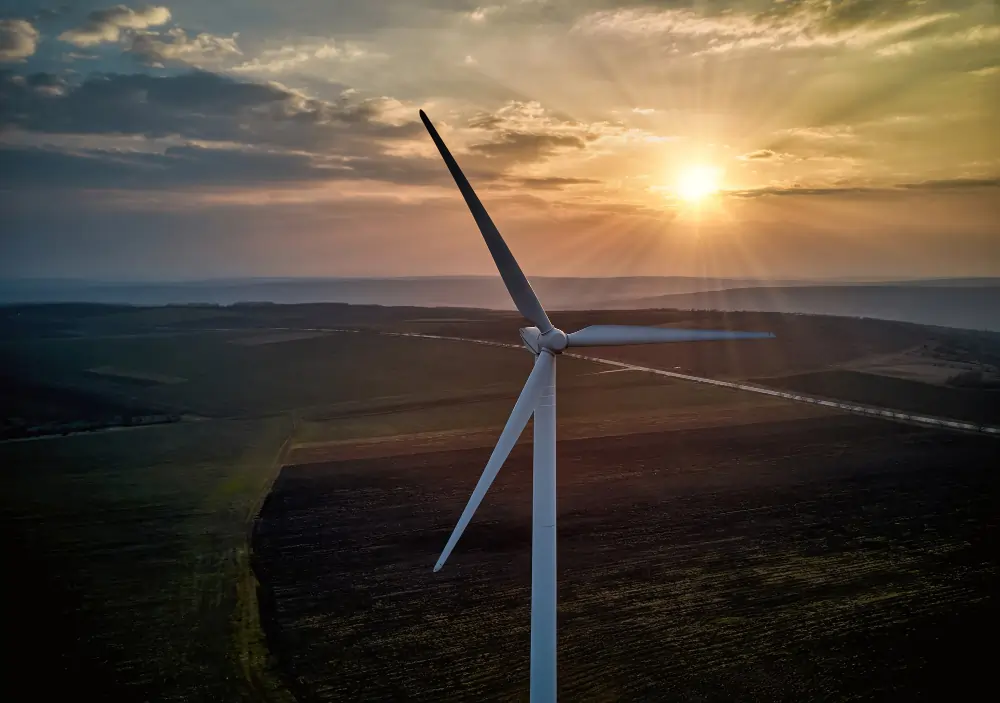
- Availability: Wind energy relies on consistent wind patterns, making it better suited for certain locations. Solar panels can generate power with varying levels of sunlight, offering wider geographic suitability.
- Space Requirements: Large-scale wind energy often requires more land than solar arrays of similar capacity.
- Cost: Wind energy installation costs can be higher initially, while solar panels have become increasingly affordable. However, long-term maintenance costs must also be considered.
- Environmental Impact: Both solar and wind energy have minimal environmental footprints compared to fossil fuels. However, wind turbines can pose a slightly higher risk to bird populations.
⫸ Conclusion
In our exploration of wind energy, it’s evident that this renewable power source holds immense potential. From its environmental advantages to technological advancements, wind-generated energy is a force for positive change in the world’s energy landscape. While challenges remain, ongoing research and innovation promise solutions for a future where wind plays an even greater role in our energy mix.
The Vital Role of Wind Energy in Our Energy Transition
As the world confronts the urgency of climate change, wind energy stands as a crucial tool. Replacing fossil fuels with clean wind power reduces emissions, promotes energy independence, and helps secure a healthier planet for future generations.
A Brighter Future Powered by Wind
The future is bright with the possibilities of wind-generated energy. Its expanding role supports thriving economies, creates sustainable jobs, and empowers communities with clean energy choices. Embracing this natural resource paves the way for a world powered by responsible, forward-thinking solutions.

